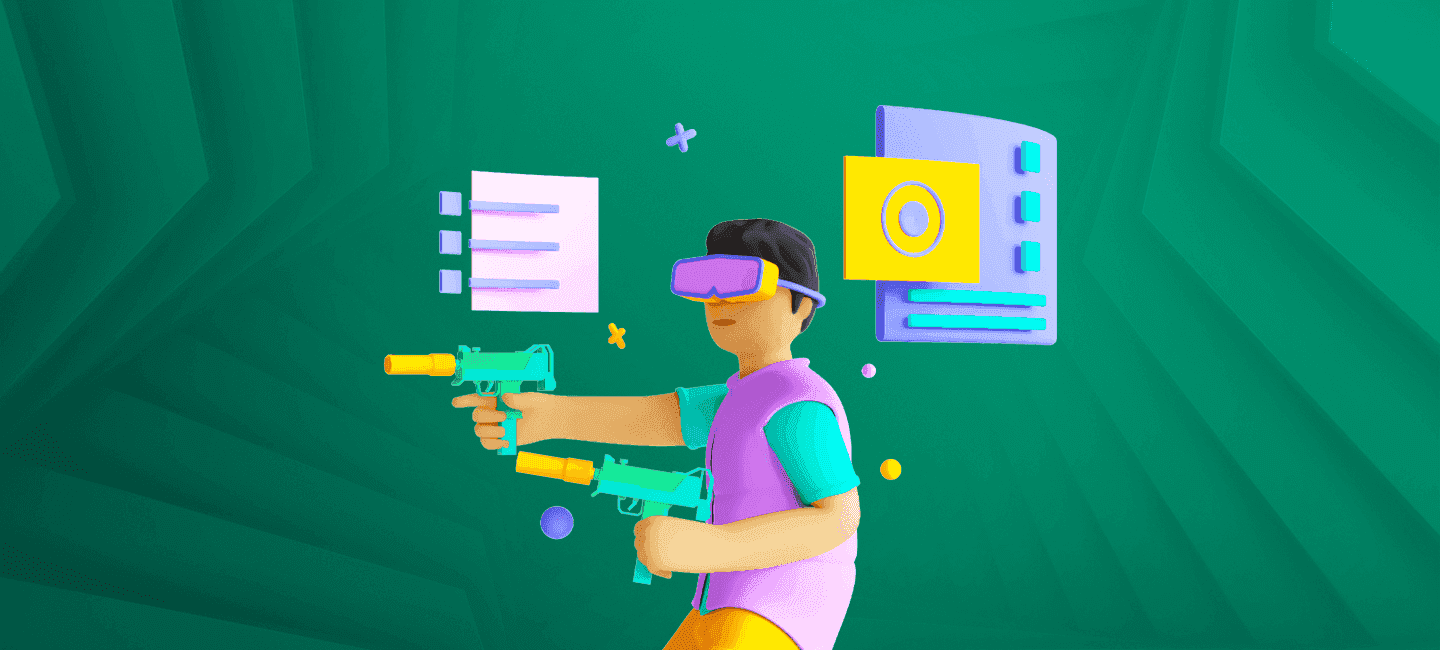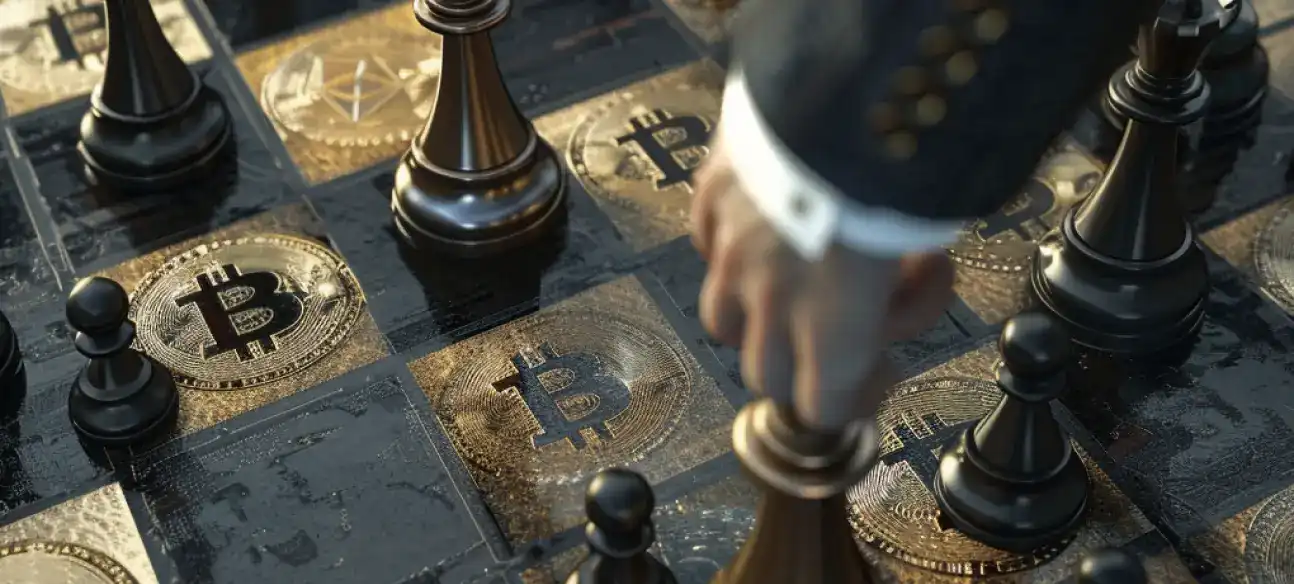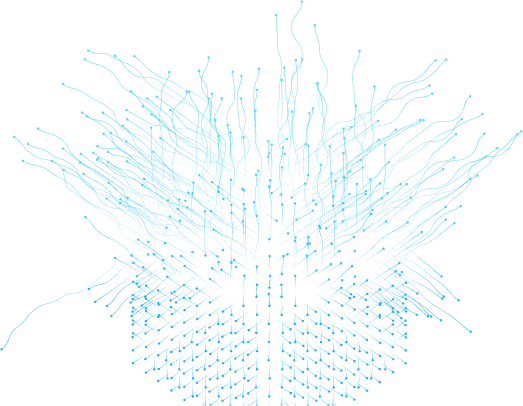
What is Web3 Gaming?
Table of Contents
Web3 gaming market size is expected to grow from $4.6 billion in 2022 to $65.7 billion by 2027.
Web3 gaming is a promising driver for mainstream blockchain adoption over the next few years. Players can own, sell, and trade the in-game assets with Web3 gaming’s decentralized architecture that brings so much more than traditional games.
Not only this, the trend of investments in Web3 gaming and the tremendous shift from basic video games to virtual reality experiences, is pushing the boundaries of the gaming industry.
In this article, we’ll dig deeper into the Web3 gaming industry to understand its features, scope, and benefits for crypto people and businesses.
Web3 Gaming Explained
What is Web3?
Web3 is an extension of cryptocurrency and a series of open-source decentralized applications connected together by blockchain architecture. It is an Internet where data is not stored on any centralized databases, instead, it is stored and protected in a decentralized Web3 gaming ecosystem where each participant of the network has equal access and control over their data.
Data ownership is one of the key characteristics of Web3 that opens new opportunities and ways for the gaming industry as well. Gamers can govern these blockchain-based networks through cryptocurrency Web3 game tokens. Let’s discuss it a bit more.
What is Web3 in Gaming?
Where Web3 is all about ownership, Web3 gaming refers to decentralized gaming where every player controls their in-game digital assets and does not involve third parties to control or manage gamers’ data. The operational architecture of Web3 gaming is built on blockchain technology where each player has equal rights to share their opinion on game evolution and ideas.
Other than this, Web3 gaming introduces new and innovative game ideas such as the play-to-earn model where gamers are given opportunities to trade assets and tokens with other players, and earn web3 gaming cryptos. One interesting fact about Web3 gaming is that it offers a high level of interoperability among various web3 gaming marketplaces where digital assets earned by a gamer can be traded across platforms.
What are Web3 Games?
Web3 games are digital games built on blockchain technology. Also known as blockchain games, play-to-earn games, and GameFi, Web3.0 games are decentralized games and include NFTs and other cryptocurrencies. Players can earn or buy digital assets through digital currencies and can trade them like physical goods. One exciting fact is that all these digital assets can be traded on multiple platforms without any third-party involvement.
Decentralization is one of the key benefits contributing to the financial strength of the industry. DAOs, crypto wallets, metaverse gaming apps, smart contracts, and decentralized marketplaces are leveling up the gaming industry.
Some Common Web3 Gaming Models
Web3 gaming has made the game ecosystem more interesting and fun. Technology is used to reward gamers for their effort and knowledge in playing games. There are different types of gaming platforms and economic models. Some major ones are mentioned below.
Play-to-earn
In the play-to-earn or P2E economic design, players are rewarded for their efforts, time, and in-game achievements. Players can also earn by winning in-game NFTs and trading them. NFTs could be avatars, characters, items, or other collectibles that level up the game and are cosmetic to use within the game only. Unlike traditional gaming, play-to-earn games are decentralized and free from any control from the developer or administrator side. Splinterlands, Silks, Fight Out, Tamadoge, Calvaria, etc. are some examples of Web3 gaming built on a play-to-earn model.
Play-to-own
Play to own game allows players to earn digital wealth like real estate houses. They accumulate rewards to buy and upgrade the assets in the game. An interesting fact about play-to-own games is that the digital objects or collectibles that players win have real worth. These assets can later be sold on the secondary market. Plutonians and Monkey League are two examples of worldwide Web3 video games based on the play-to-own model.
Move-to-earn
The primary concept of move-to-earn (M2E) games is that instead of playing games, players move and earn digital assets. In this way, players are rewarded. M2E gaming apps enable users to earn video game cryptocurrency by participating in workouts, and physical exercises. fitness or other sports-related activities. These apps are built on decentralized finance (DeFi) features to reward the participants. Walken, STEPN (GMT), Dotmoovs (MOOV), Step (FITFI), etc. are some examples of the move-to-earn gaming economic model.
Challenges of Traditional Gaming
With the passage of time, the expectations of gamers are also sky-rising. Now is the time to revolutionize the gaming landscape with something more exciting, advanced, and entertaining to always keep a boom in the industry. Here are some potential challenges faced by traditional gaming practitioners.
Regulatory Constraints
Regulatory uncertainty is one of the major pain points of Web3 gaming. Other than the existing issues of consumer protection, IP, and gambling that remain in effect in conventional gaming, web3 game development adds more challenges when it comes to converting virtual currencies. For instance, security laws, money transfers, and NFTs introduce several questions about the web3 gaming architecture.
It is important to understand the legal landscape of cryptocurrency-based gaming to avoid any regulatory objections that can become a hurdle in the industry’s growth. The transparent and secure nature of blockchain makes web3 gaming well-regulated; however, innovation is still ongoing.
Ownership of Digital Assets
The market in traditional free-to-play games is unidirectional. Players can buy digital goods in the game that can only be used by the rules of web3 game developers. These goods serve specific functions to help players unlock the next levels, buy character avatars, or in-game tools, etc. there is no defined ownership of assets that dedicatedly belong to the gamer.
Whereas, worldwide Web3 games give copyrights to the in-game assets and the owners who can earn in games and can also transfer those assets to other platforms or players.
Scalability
One of the major challenges of traditional gaming is scalability. Some blockchain platforms are already working on the scalability of cryptocurrency video games. For instance, layer 2 protocols are created on top of the Ethereum blockchain which ultimately reduces transaction times and processing fees and improves the scalability of the gaming platform.
Limited In-Game Assets
Traditional gaming ecosystems have a limited number of in-game assets that can only be used and purchased in the game with fiat currency and cannot be transferred to any other marketplace.
Information Control
You might be wondering about the use and access of your personal and game-related information on the gaming platform. The centralized game models and platforms store your data on their servers from where it can easily be accessed by game administration. Moreover, these servers are prone to several vulnerabilities and this is the reason major cyberattacks and data breaches take place.
What are the Key Features of Web3 Gaming?
Web gaming is a value-exchange gaming model where people can own and trade in-game objects and collectibles in the form of unique NFTs using cryptocurrencies. Web Gaming offers self-sovereignty and decentralization in gaming and is open source. There are some fundamental features of Web3 gaming platforms:
Ownership and Interoperability
In Web3 gaming, players can completely own their in-game earnings, digital assets, NFTs, and collectibles such as characters, avatars, equipment, etc. Moreover, players can transfer their in-game assets to other gaming platforms.
Robust and Resilient
Web3 gaming environment is free from the control of any intermediaries which ultimately reduces processing costs and time. Automated data storage makes Web3 gaming more scalable and secure.
Transparency
Web3 gaming operates autonomously without any third-party intervention. The Web3 ecosystem relies on voting consensus from all the network participants for any changes to be made in the gaming process. As the data is stored in a decentralized database and is accessible to authenticated participants, it increases the level of transparency and trust between the players.
Conventional Gaming Updates
Web3 allows you to upgrade old games with new and advanced features. You can shift the entire operational infrastructure to a decentralized one and can extend it to the metaverse as well. Enable in-game digital assets, NFTs, and collectibles to enable trading for players in various marketplaces.
Player-driven Gaming Environment
Web3 gaming supports various economic models including play-to-earn (as discussed above). All these models are player-centric and offer various benefits to players. Web3 gaming allows players to earn assets, trade, and sell them on various other platforms.
Technology Stack of Web3 Gaming
Here is the tech stack used for Web3 gaming.
Web3 dApps & Libraries
In Web3 gaming, dApps and libraries are used to allow players and developers to interact with each other via a blockchain platform. These apps are built on Unreal or Unity SDKs in which libraries are used to enable communication in the ecosystem using smart contracts.
XR Hardware
XR hardware is used to interact with the metaverse for a more engaging gaming experience. It includes scanning sensors, haptic gloves, smart glasses, etc.
Smart Contracts
Smart contracts in Web3 gaming regulate various game processes. They are used to automate the decision-making processes according to the set of rules defined for the gaming platform. Developers make use of Remix IDE to write, compile and deploy smart contracts. Other than this, many tools including Brownie, Truffle, and Hardhat are used for local development.
Digital Wallets
Each Web3 gaming platform has a digital wallet used to identify players. The wallet holds all the digital assets and earnings of the player and is used to interact with the blockchain and other marketplaces.
Web3/Node Providers
Nodes or Web3 providers are important because they extract gaming information stored on the blockchain network. Nodes play an integral role in the Web3 developer stack because, without nodes, Web3 libraries are not capable of interacting with smart contracts.
Top Web3 Gaming Projects
There are so many exciting projects emerging that are paving the future of Web3 gaming. Here’s a list of the top 3 Web3 gaming projects of 2023.
DigiToads
DigiToads is an exciting new Web3 NFT game that allows you to collect, battle, and nurture Toad NFTs. The game considers NFT staking pools where you can earn high prizes for staking the NFTs for a long time. The platform conducts monthly on-chain trade tournaments and offers treasury rewards.
CryptoKitties
Cryptokitties is one of the popular Web3 games and blockchain gaming platforms. It is a decentralized collectible video game that allows players to collect and trade digital cats. It is built on the Ethereum blockchain using the ERC721 token standard and is popularizing the concepts of non-fungible tokens (NFTs). The game is originally designed to explore digital scarcity using ERC71 tokens and smart contracts.
Axie Infinity
Axie Infinity is a crypto gaming platform where players can raise, breed, and fight with creatures. The game has eye-catching graphics, a huge live community, and an engaging gameplay environment. It is also built on the Ethereum blockchain to give actual ownership of assets of their Axies to participate in the player-driven economy.
List of Best Web3 Games in Crypto
We’ve compiled a web3 games list for you to get started, play, and start an immersive gaming experience.
Sorare
A virtual game that allows you to collect, play and win officially licensed digital cards that feature the world's best global football players.
Built on: Ethereum
Planet IX
Planet IX is an NFT-based GameFi strategy game where you play to restore the planet from destruction.
Built on: Polygon
Aurory
Aurory is a free-to-play and play-to-earn role-playing game and NFT ecosystem to offer true ownership of assets.
Built on: Solana
DeFi Land
It is a multi-chain agriculture simulation game.
Built on: Solana
Zed Run
It is the first play-to-earn horse racing game.
Built on: Polygon
STEPN
It is a Web3 lifestyle app with a move-to-earn model where users can earn money by walking, jogging, or running.
Built on: Solana
Alien Worlds
Alien Worlds is an NFT Metaverse and a sci-fi crypto game where users can play with unique digital items (NFTs).
Built on: Ethereum & BNB Chain
Conclusion
Web3 gaming is revolutionizing the industry with an increased level of transparency, engagement, rewards, and communication. We can witness immersive Web3 gaming apps that are already creating a buzz in the crypto industry and are expected to push boundaries for more exciting innovations in the future.
Table of Contents
Web3 gaming market size is expected to grow from $4.6 billion in 2022 to $65.7 billion by 2027.
Web3 gaming is a promising driver for mainstream blockchain adoption over the next few years. Players can own, sell, and trade the in-game assets with Web3 gaming’s decentralized architecture that brings so much more than traditional games.
Not only this, the trend of investments in Web3 gaming and the tremendous shift from basic video games to virtual reality experiences, is pushing the boundaries of the gaming industry.
In this article, we’ll dig deeper into the Web3 gaming industry to understand its features, scope, and benefits for crypto people and businesses.
Web3 Gaming Explained
What is Web3?
Web3 is an extension of cryptocurrency and a series of open-source decentralized applications connected together by blockchain architecture. It is an Internet where data is not stored on any centralized databases, instead, it is stored and protected in a decentralized Web3 gaming ecosystem where each participant of the network has equal access and control over their data.
Data ownership is one of the key characteristics of Web3 that opens new opportunities and ways for the gaming industry as well. Gamers can govern these blockchain-based networks through cryptocurrency Web3 game tokens. Let’s discuss it a bit more.
What is Web3 in Gaming?
Where Web3 is all about ownership, Web3 gaming refers to decentralized gaming where every player controls their in-game digital assets and does not involve third parties to control or manage gamers’ data. The operational architecture of Web3 gaming is built on blockchain technology where each player has equal rights to share their opinion on game evolution and ideas.
Other than this, Web3 gaming introduces new and innovative game ideas such as the play-to-earn model where gamers are given opportunities to trade assets and tokens with other players, and earn web3 gaming cryptos. One interesting fact about Web3 gaming is that it offers a high level of interoperability among various web3 gaming marketplaces where digital assets earned by a gamer can be traded across platforms.
What are Web3 Games?
Web3 games are digital games built on blockchain technology. Also known as blockchain games, play-to-earn games, and GameFi, Web3.0 games are decentralized games and include NFTs and other cryptocurrencies. Players can earn or buy digital assets through digital currencies and can trade them like physical goods. One exciting fact is that all these digital assets can be traded on multiple platforms without any third-party involvement.
Decentralization is one of the key benefits contributing to the financial strength of the industry. DAOs, crypto wallets, metaverse gaming apps, smart contracts, and decentralized marketplaces are leveling up the gaming industry.
Some Common Web3 Gaming Models
Web3 gaming has made the game ecosystem more interesting and fun. Technology is used to reward gamers for their effort and knowledge in playing games. There are different types of gaming platforms and economic models. Some major ones are mentioned below.
Play-to-earn
In the play-to-earn or P2E economic design, players are rewarded for their efforts, time, and in-game achievements. Players can also earn by winning in-game NFTs and trading them. NFTs could be avatars, characters, items, or other collectibles that level up the game and are cosmetic to use within the game only. Unlike traditional gaming, play-to-earn games are decentralized and free from any control from the developer or administrator side. Splinterlands, Silks, Fight Out, Tamadoge, Calvaria, etc. are some examples of Web3 gaming built on a play-to-earn model.
Play-to-own
Play to own game allows players to earn digital wealth like real estate houses. They accumulate rewards to buy and upgrade the assets in the game. An interesting fact about play-to-own games is that the digital objects or collectibles that players win have real worth. These assets can later be sold on the secondary market. Plutonians and Monkey League are two examples of worldwide Web3 video games based on the play-to-own model.
Move-to-earn
The primary concept of move-to-earn (M2E) games is that instead of playing games, players move and earn digital assets. In this way, players are rewarded. M2E gaming apps enable users to earn video game cryptocurrency by participating in workouts, and physical exercises. fitness or other sports-related activities. These apps are built on decentralized finance (DeFi) features to reward the participants. Walken, STEPN (GMT), Dotmoovs (MOOV), Step (FITFI), etc. are some examples of the move-to-earn gaming economic model.
Challenges of Traditional Gaming
With the passage of time, the expectations of gamers are also sky-rising. Now is the time to revolutionize the gaming landscape with something more exciting, advanced, and entertaining to always keep a boom in the industry. Here are some potential challenges faced by traditional gaming practitioners.
Regulatory Constraints
Regulatory uncertainty is one of the major pain points of Web3 gaming. Other than the existing issues of consumer protection, IP, and gambling that remain in effect in conventional gaming, web3 game development adds more challenges when it comes to converting virtual currencies. For instance, security laws, money transfers, and NFTs introduce several questions about the web3 gaming architecture.
It is important to understand the legal landscape of cryptocurrency-based gaming to avoid any regulatory objections that can become a hurdle in the industry’s growth. The transparent and secure nature of blockchain makes web3 gaming well-regulated; however, innovation is still ongoing.
Ownership of Digital Assets
The market in traditional free-to-play games is unidirectional. Players can buy digital goods in the game that can only be used by the rules of web3 game developers. These goods serve specific functions to help players unlock the next levels, buy character avatars, or in-game tools, etc. there is no defined ownership of assets that dedicatedly belong to the gamer.
Whereas, worldwide Web3 games give copyrights to the in-game assets and the owners who can earn in games and can also transfer those assets to other platforms or players.
Scalability
One of the major challenges of traditional gaming is scalability. Some blockchain platforms are already working on the scalability of cryptocurrency video games. For instance, layer 2 protocols are created on top of the Ethereum blockchain which ultimately reduces transaction times and processing fees and improves the scalability of the gaming platform.
Limited In-Game Assets
Traditional gaming ecosystems have a limited number of in-game assets that can only be used and purchased in the game with fiat currency and cannot be transferred to any other marketplace.
Information Control
You might be wondering about the use and access of your personal and game-related information on the gaming platform. The centralized game models and platforms store your data on their servers from where it can easily be accessed by game administration. Moreover, these servers are prone to several vulnerabilities and this is the reason major cyberattacks and data breaches take place.
What are the Key Features of Web3 Gaming?
Web gaming is a value-exchange gaming model where people can own and trade in-game objects and collectibles in the form of unique NFTs using cryptocurrencies. Web Gaming offers self-sovereignty and decentralization in gaming and is open source. There are some fundamental features of Web3 gaming platforms:
Ownership and Interoperability
In Web3 gaming, players can completely own their in-game earnings, digital assets, NFTs, and collectibles such as characters, avatars, equipment, etc. Moreover, players can transfer their in-game assets to other gaming platforms.
Robust and Resilient
Web3 gaming environment is free from the control of any intermediaries which ultimately reduces processing costs and time. Automated data storage makes Web3 gaming more scalable and secure.
Transparency
Web3 gaming operates autonomously without any third-party intervention. The Web3 ecosystem relies on voting consensus from all the network participants for any changes to be made in the gaming process. As the data is stored in a decentralized database and is accessible to authenticated participants, it increases the level of transparency and trust between the players.
Conventional Gaming Updates
Web3 allows you to upgrade old games with new and advanced features. You can shift the entire operational infrastructure to a decentralized one and can extend it to the metaverse as well. Enable in-game digital assets, NFTs, and collectibles to enable trading for players in various marketplaces.
Player-driven Gaming Environment
Web3 gaming supports various economic models including play-to-earn (as discussed above). All these models are player-centric and offer various benefits to players. Web3 gaming allows players to earn assets, trade, and sell them on various other platforms.
Technology Stack of Web3 Gaming
Here is the tech stack used for Web3 gaming.
Web3 dApps & Libraries
In Web3 gaming, dApps and libraries are used to allow players and developers to interact with each other via a blockchain platform. These apps are built on Unreal or Unity SDKs in which libraries are used to enable communication in the ecosystem using smart contracts.
XR Hardware
XR hardware is used to interact with the metaverse for a more engaging gaming experience. It includes scanning sensors, haptic gloves, smart glasses, etc.
Smart Contracts
Smart contracts in Web3 gaming regulate various game processes. They are used to automate the decision-making processes according to the set of rules defined for the gaming platform. Developers make use of Remix IDE to write, compile and deploy smart contracts. Other than this, many tools including Brownie, Truffle, and Hardhat are used for local development.
Digital Wallets
Each Web3 gaming platform has a digital wallet used to identify players. The wallet holds all the digital assets and earnings of the player and is used to interact with the blockchain and other marketplaces.
Web3/Node Providers
Nodes or Web3 providers are important because they extract gaming information stored on the blockchain network. Nodes play an integral role in the Web3 developer stack because, without nodes, Web3 libraries are not capable of interacting with smart contracts.
Top Web3 Gaming Projects
There are so many exciting projects emerging that are paving the future of Web3 gaming. Here’s a list of the top 3 Web3 gaming projects of 2023.
DigiToads
DigiToads is an exciting new Web3 NFT game that allows you to collect, battle, and nurture Toad NFTs. The game considers NFT staking pools where you can earn high prizes for staking the NFTs for a long time. The platform conducts monthly on-chain trade tournaments and offers treasury rewards.
CryptoKitties
Cryptokitties is one of the popular Web3 games and blockchain gaming platforms. It is a decentralized collectible video game that allows players to collect and trade digital cats. It is built on the Ethereum blockchain using the ERC721 token standard and is popularizing the concepts of non-fungible tokens (NFTs). The game is originally designed to explore digital scarcity using ERC71 tokens and smart contracts.
Axie Infinity
Axie Infinity is a crypto gaming platform where players can raise, breed, and fight with creatures. The game has eye-catching graphics, a huge live community, and an engaging gameplay environment. It is also built on the Ethereum blockchain to give actual ownership of assets of their Axies to participate in the player-driven economy.
List of Best Web3 Games in Crypto
We’ve compiled a web3 games list for you to get started, play, and start an immersive gaming experience.
Sorare
A virtual game that allows you to collect, play and win officially licensed digital cards that feature the world's best global football players.
Built on: Ethereum
Planet IX
Planet IX is an NFT-based GameFi strategy game where you play to restore the planet from destruction.
Built on: Polygon
Aurory
Aurory is a free-to-play and play-to-earn role-playing game and NFT ecosystem to offer true ownership of assets.
Built on: Solana
DeFi Land
It is a multi-chain agriculture simulation game.
Built on: Solana
Zed Run
It is the first play-to-earn horse racing game.
Built on: Polygon
STEPN
It is a Web3 lifestyle app with a move-to-earn model where users can earn money by walking, jogging, or running.
Built on: Solana
Alien Worlds
Alien Worlds is an NFT Metaverse and a sci-fi crypto game where users can play with unique digital items (NFTs).
Built on: Ethereum & BNB Chain
Conclusion
Web3 gaming is revolutionizing the industry with an increased level of transparency, engagement, rewards, and communication. We can witness immersive Web3 gaming apps that are already creating a buzz in the crypto industry and are expected to push boundaries for more exciting innovations in the future.





